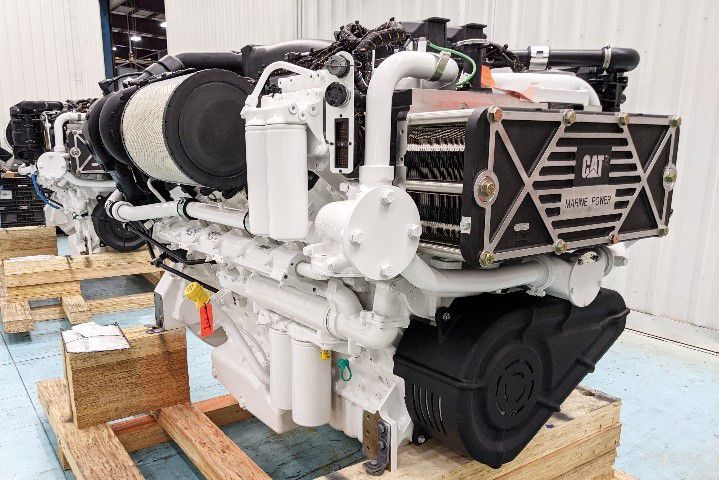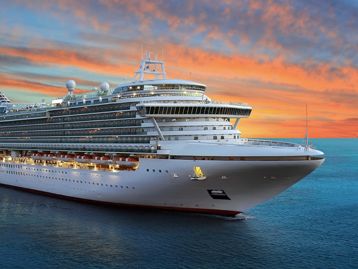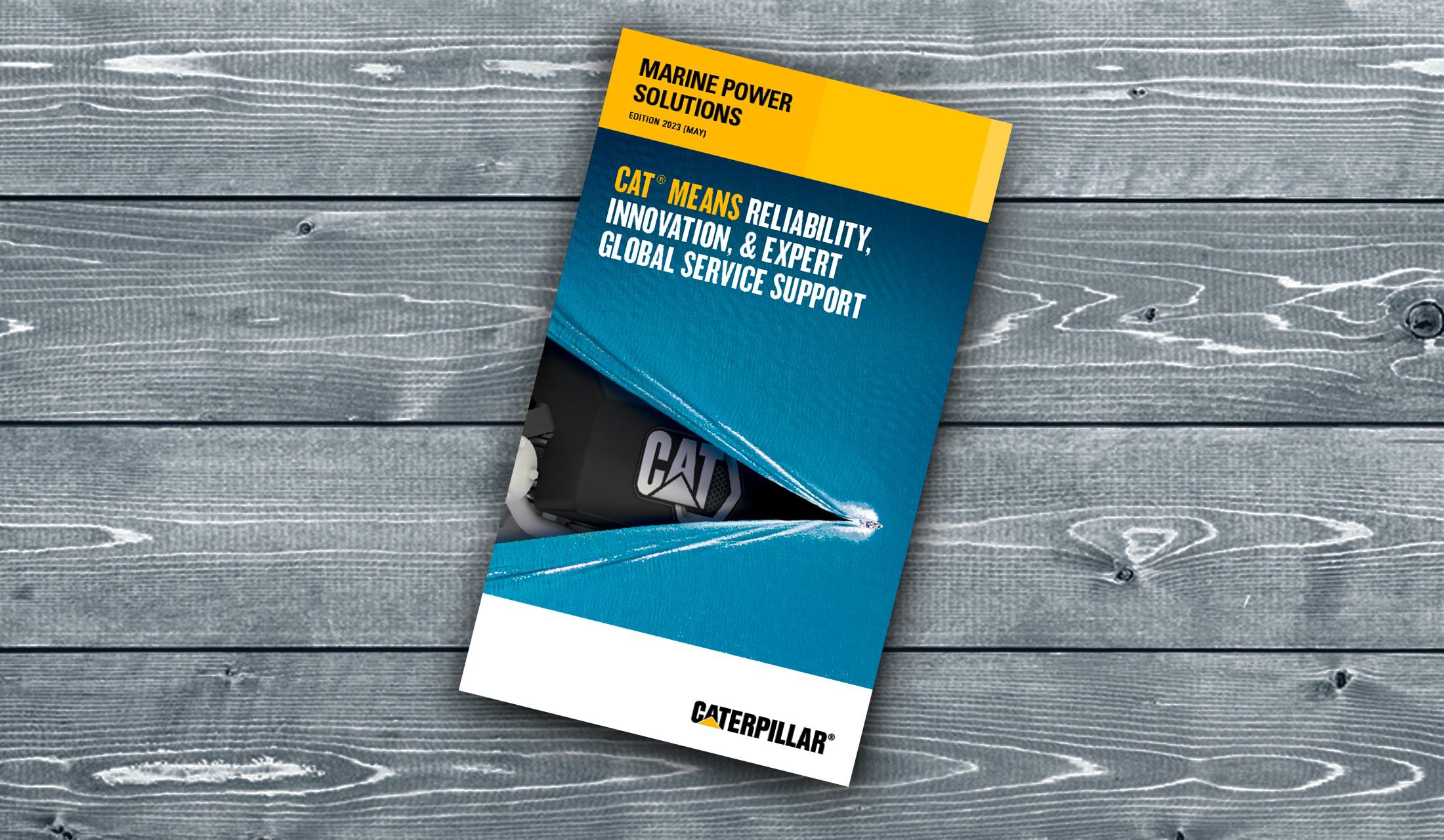

Sign In
Welcome! Sign In to personalize your Cat.com experience
If you already have an existing account with another Cat App, you can use the same account to sign in here
Register Now
One Account. All of Cat.
Your Caterpillar account is the single account you use to log in to select services and applications we offer. Shop for parts and machines online, manage your fleet, go mobile, and more.
Account Information
Site Settings
Security
MAKING SUSTAINABLE CRUISING A REALITY
3 WAYS CATERPILLAR IS HELPING THE CRUISE INDUSTRY MEET ITS ENVIRONMENTAL GOALS
With ports of call in some of the world’s most beautiful and environmentally sensitive areas — and passengers who are increasingly concerned about making responsible choices when enjoying the cruising lifestyle — the cruise industry faces enormous pressure to operate more cleanly. Most cruise lines have set visible, aggressive sustainability goals that extend far beyond regulatory compliance.
At Caterpillar, we share the cruise industry’s desire to reduce environmental impact, and that’s why we’re actively helping cruise lines tackle their sustainability goals through our products and services. Here are three examples of ways we’re taking the lead.
1. Delivering engines that operate on cleaner-burning fuel
Current estimates indicate 25-30% of recently ordered cruise ships will be powered by dual-fuel engines, which can operate on either oil or natural gas. When they run on liquified natural gas (LNG), these ships emit virtually no soot or sulfur oxides and far less NOx or CO2 than oil-burning vessels.
Caterpillar has long been a leader in the application of dual-fuel engines in the cruise segment, specializing in all aspects of LNG engines, fuel gas systems and propulsion. Our MaK™ brand dual-fuel engines have been at sea for several years powering commercial vessels.
In 2018, the world’s first cruise ship capable of operating at sea and in port on cleaner-burning LNG set sail — powered by four of our MaK 16 M 46 dual-fuel engines and a complete LNG-handling system. It’s one of nine ships on order by this cruise line to be equipped with our dual-fuel engines.
What makes our LNG-powered engines so appealing? One factor is their ability to start and run on gas versus diesel, which means ships can leave the dock or the harbor in cleaner-burning mode. Another is their capacity to operate on gas for extended periods in low load — when ships are docked or anchored, for example, and require only a fraction of the full power of the engine. Both are key features for cruise lines operating in heavily populated or environmentally sensitive areas.
We also offer a wide range of aftertreatment systems using selective catalytic reduction (SCR) that substantially reduce NOx emissions for engines running on low-sulfur marine gas oil — and even for heavy fuel oil with up 3.5% sulfur content. Our factory-certified SCR solutions give cruise lines the option to use diesel engines to meet their emissions goals or combine aftertreatment with dual-fuel engines to take full advantage of fuel flexibility.
2. Providing technology that reduces fuel burn and CO2 emissions
While LNG-powered engines offer a great solution for new builds, they’re not as viable an option for existing vessels. The location of engines on board a cruise ship makes any repower impractical, and converting to LNG is even more difficult because of the space required for tanks to store the LNG.
The good news is that there’s a way to reduce emissions without modifying a ship’s engines at all. For every liter of diesel fuel you save, you eliminate 2.68 kg of CO2. And saving fuel is simple with two technologies from Caterpillar: Multi-Engine Optimizer (MEO) and Asset Intelligence (AI).
MEO is an advisory system that lays over the top of a cruise ship’s existing power management system. It applies proprietary performance maps of Cat and MaK engines and control algorithms to tell that system which engines to operate and at what load. MEO uses fuel maps to determine the best combination of engines and enables dynamic asymmetrical load allocation — which means you can operate the ship’s engines at independent load factors. Precise fuel flow measuring for each engine results in the lowest possible fuel consumption for the entire system.
AI is a total vessel monitoring solution that collects and analyzes data from onboard systems, then provides recommendations on when and how to take action. It helps reduce fuel burn by analyzing fuel and energy performance on board a ship, identifying operational practices and component maintenance issues that may be increasing its fuel burn and suggesting ways to address them. AI’s automated monitoring also makes emissions compliance reporting fast and easy.
Both MEO and AI are easy to integrate not just into existing vessels but also on new cruise ships, with minimal intervention and time required.
3. Introducing a hybrid solution that makes zero-emissions operation possible
Currently in use in the tug and offshore industries, our hybrid propulsion system allows vessel operators to transition between diesel-mechanic and diesel-electric operation. While a conventional diesel-mechanical drive system requires the main engines and one or two generator sets to run at all times to power the Z-drives and electrical loads, respectively, hybrid propulsion uses only the amount of engine power required for the task at hand.
How might that benefit the cruise industry? Diesel-mechanic mode would give a ship the full power it needs to operate most fuel-efficiently while cruising. Then, that same ship could switch to diesel-electric mode coming in and out of port or while sailing through environmentally sensitive areas. Hybrid propulsion systems equipped with additional energy storage could even offer a cruise ship the ability to turn off its main engines entirely — generating zero emissions yet still providing the required electrical load for operations in areas with the most stringent emissions restrictions.
When it comes to clean, efficient, environmentally friendly operation, the cruise industry is leading the way — and we’re proud to play a role in making more sustainable cruising a reality. To learn more about putting our emissions-friendly solutions to work on your new builds or existing vessels, talk to your local Cat® dealer.
Related Articles
-
Jarrett Bay Insider Special Feature - Episode 1 – Hull 48 C32B Repower “Out with the Old”
In episode one of this three-part series, go behind the scenes as the old engines come out of Hull 48 and the repower process with new Cat® C32Bs gets underway.
Learn More -
Episode Two: Iron Leader Gets Her New Iron
In episode two of this three-part series, see what it takes to install new 2433 mhp C32B engines in Iron Leader — and find out the special meaning behind the boat’s name.
Learn More -
Winter Custom Yachts on the C32B
Why is Tim Winters excited about the new 2433 mhp C32B? More speed, less noise and a trouble-free experience anywhere in the world. Watch the video.
Learn More -
Caterpillar Marine Delivers the First C32B 2433 MHP Engines
Caterpillar Marine announced the delivery of the first Cat® C32B 2433 mhp engines to Cat dealer Gregory Poole in North Carolina. Building on the experiences gained with high performance applications, the highly anticipated C32B product line will be available as a 12-cylinder in a range of power options from 1800 to 2400bhp (1825-2433 mhp).
Learn More







